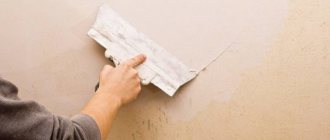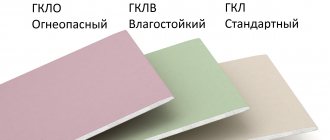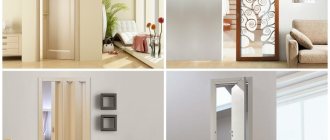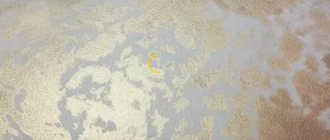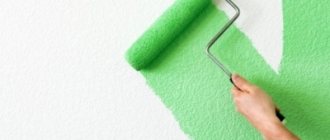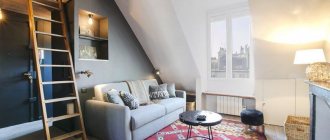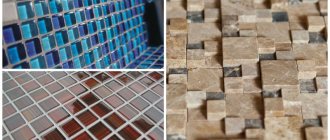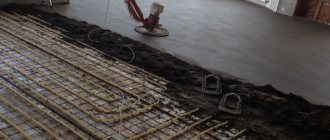Gone are the days when plaster was used exclusively for preparatory purposes when decorating walls in a house. Now this material is widely used for surface finishing. Thanks to its decorative properties, the interior can be given an original and unique look.
Decorative plaster is often confused with liquid wallpaper https://bioplast-russia.ru/. These materials are finishing materials, liquid wallpaper contains cellulose, a natural, harmless material. Decorative plaster contains cement and sand.
Purpose and benefits
Decorative plaster for interior decoration is a finishing coating for surfaces that can be applied with or without initial preparation of the base. This material is often offered in ready-made form, when the mixture is diluted in advance with a solvent or ordinary water under production conditions. After purchase, the mixture is used without modification.
But there are also dry mixtures that require adding liquid according to the instructions before adding them. To give the desired effect, various fillers are added to the plaster - pieces of shells or small pebbles.
This material has the following advantages:
- excellent soundproofing properties;
- resistance to moisture and temperature changes;
- smoothes out unevenness and other defects;
- ease of application and ease of use;
- variety of color palette.
What should the plaster be like?
An example of decorative plaster in the interior.
Plaster composition is essentially a mixture based on a number of components (cement, clay, sand), which is used for the final finishing of walls and ceilings. But, it should be understood that such plaster is fundamentally different from general construction plaster, used for rough processing of walls and ceilings.
Decorative plaster in light colors.
Decorative natural plasters are multilayer coatings that include at least two layers. The first layer is a primer, it must be compatible with the wall material. That is, one primer is used for brick, another for wood, etc. For final finishing, a mixture is used, which consists of a binder component that is saturated with various types of fillers.
Types of material
In stores you can find different types of coatings depending on the composition. Their use has its own advantages and application features.
Types of plaster
Let's consider the main characteristics of each type of decorative plaster in the light of the design of the walls in the hallway.
Depending on the binder there are:
- mineral;
- acrylic;
- silicone;
- silicate.
Based on the type of surface obtained and the characteristics of the composition, it is customary to distinguish:
- structural;
- textured;
- Venetian
Mineral
The basis of the mixture is cement, lime. Supplied in the form of a dry powder, which is diluted to the desired consistency with water. It works well in places with high traffic, as it is not afraid of chips, but under the influence of vibration the surface can crack. This must be taken into account if the hallway is adjacent, for example, to an elevator shaft. It is not afraid of humidity and temperature changes - important for private homes where the entrance area is often exposed to changing weather conditions. The downside is that the palette is limited to light colors, which can be a problem for the corridor even though the coating can be washed.
Acrylic
A rich palette and resistance to vibration distinguish the mixture with an acrylic binder from the mineral one. Can be used both for painting and just for waxing. After drying, it forms a moisture- and vapor-proof coating that can protect walls from ingrained stains.
An excellent choice for rooms without natural light, as it changes color under the influence of ultraviolet radiation.
Silicone
The base is synthetic resins, which give the material elasticity. It does not accumulate static electricity, which means it does not attract dust, which is abundant in the entrance area. Not afraid of water, vibrations and sunlight. But the cost is higher than acrylic.
Silicate
The base is liquid glass, which makes this type of coating the most durable, but requires application only with silicate paints and primers. It releases toxic substances, which is why it is used in exterior decoration, but there are also safe mixtures that can be safely used in the hallway.
Structural
It contains large mineral or synthetic particles that give it relief. It is applied in one layer and does not require careful leveling of the walls. This type of finishing includes, for example, bark beetle. This type of decorative plaster in the hallway feels great due to its increased strength, and you can diversify the recognizable pattern by changing the direction of application: for the effect of balsa wood - circular movements, and horizontal application and horizontal grooves will visually expand the space. Mosaic plaster - a mixture of acrylic binder and multi-colored pebbles, feels great even in the corridor of a public building.
Textured
This type is distinguished by a fine-grained main filler; pebbles, shells, silk or linen fibers, and mica can be added as decorative components. Applied in thin layers, it allows you to create reliefs using tools; this plaster is used to create stucco elements for painting and decoration.
If complex textures are needed, then it is better to entrust their application to professionals, but with simpler ones created by special rollers, you can handle them yourself if you practice.
Venetian
Venetian plaster in the interior is not a new invention. A coating that imitates facing stone was used back in the heyday of the Roman Empire. Traditionally, this finishing material is used in classic interiors. This hallway plaster will transform your home into a residence as it looks very respectable. However, as a local decor it will fit into the design of more democratic styles. It feels great in the hall thanks to the finishing coat of varnishes and waxes. A complex design somewhat dissolves the space, especially if you play with this effect with light.
Separately, the common types of relief created by decorative plaster are distinguished.
Graffito
A relatively new way of decorating. It consists of imitation of cladding with wild stone or brickwork. This rustic finish looks appropriate in a hallway. It is permissible to use locally, covering and protecting corners and slopes.
Flock
Flocks are acrylic, cellulose or silk flakes that can be added to the finished mixture or applied with a spray gun directly to the wall over the adhesive. Provides additional sound insulation. Imitates suede, velor. Very pleasant to the touch. Better known as liquid wallpaper.
Silk
Thanks to the inclusion of mother-of-pearl threads, the coating creates the effect of wet silk fabric that shines gracefully in the light. It is not afraid of moisture, and therefore of wet cleaning.
Under the brick
You can create an imitation of brickwork using the graffito technique or using rollers and stencils. “Masonry” can be either neat or deliberately rough, rustic, depending on the style decision.
Under natural stone
The imitation of a stone cut is recreated by the Venetian, but creating the appearance of a natural, not facing stone is the work of a master decorator, since it is a product of modeling. If you are interested in a less pronounced, but at the same time no less charismatic rock surface, then it is applied with a spatula and trowel.
Relief plaster
The material allows you to create all kinds of reliefs on the surface of walls and ceilings. These can be either simple bark beetles (the pattern creates a filler) and a fur coat (rolling with a fur roller on a damp surface leaves a characteristic mark), or complex stencil designs, carved and molded reliefs, patterns applied with textured rollers.
Acrylic
It is based on acrylic resin, and the material itself can be applied to a wide variety of surface types. As a rule, it is sold in ready-made form. It is characterized by elasticity and durability. Having a low level of moisture absorption, this mixture is resistant to moisture, as well as to changes in the base. At the same time, there are disadvantages:
- rapid flammability;
- possibility of loss of appearance.
Mineral
The cement powder mixture requires dilution with water. It is easy to apply to the surface. The material is durable, moisture resistant, has good vapor permeability and has thermal insulation properties.
Factors limiting use will be:
- the need for updating once every ten years;
- weak elasticity;
- the need for subsequent staining.
Silicate
It is most often used as facade decorative plaster, since it contains potassium glass, which is harmful to humans. It is advisable to apply it to a mineral mixture or directly to concrete. The benefits include:
- strength and high elasticity;
- high drying speed;
- Possibility of cleaning with water;
- excellent vapor permeability;
- antibacterial effect;
- durability.
However, this is an expensive and dangerous material for humans, requiring certain skills in working with it.
Excessive consumption
It often happens that a job requires more materials than originally expected.
This can happen either due to a very problematic wall surface that requires a thicker layer of plaster, or because a beginner simply applies it incorrectly.
We recommend reading:
Turquoise walls - design ideas, stylish combinations and design features (130 photos)Photo frames on the wall - placement ideas and options for decorating walls using photo frames (115 photos and videos)
Panels for wall decoration: stylish and modern wall design options. 130 photos and videos of the use of decorative panels
It is very important to correctly determine the direction in which the material should be distributed and learn how to hold the spatula properly.
Silicone
Modern material made from silicone-type resins is sold ready-made in a wide color palette.
Main advantages:
- elasticity and high degree of adhesion;
- moisture resistance and the ability to quickly remove dust;
- ease of finishing of any type of base indoors and outdoors;
- durability.
At the same time, the material is not cheap, and before application the surface must be treated with a silicone primer.
Textured
This is a material with a very viscous structure. The composition includes various fillers, such as mica, wood, granite or marble chips. Can be used for both internal and external work. Concrete, brick and even wooden bases are subject to finishing.
Advantages:
- formation of a durable waterproof but breathable coating;
- the ability to imitate other materials, such as leather, stone or wood;
- selection of decorative plaster color by tinting;
- excellent heat and sound insulation properties;
- ease of application and affordable price.
To create the desired pattern, you need to prepare a roller with a spatula and arm yourself with a stencil.
Plaster application technology
Drawing a pattern on decorative plaster.
Laying plaster is not a very complicated process. At least no more difficult than working with traditional materials. But the cost per square meter of its creation can reach several thousand rubles.
But as practice shows, a lot depends on the parameters of the mixture. You can buy mixtures with different characteristics on the market, and it is quite enough to strictly follow the instructions, which are always on the packaging.
Structural
A ready-made material with a base of acrylic or silicate resins is offered for sale. Marble and quartz chips are used as filler, resulting in a grainy structure.
This is a universal, mechanically resistant coating. Applying decorative plaster with your own hands is quite simple; as a result, an original relief is formed.
The resulting layer is characterized by high parameters of breathability and moisture resistance. At the same time, temperature fluctuations do not have a significant impact on quality.
To apply the material you need:
- clean the area;
- dry the wall;
- if necessary, level the surface;
- prime the wall and apply plaster.
Preparing for work
Under no circumstances should it be neglected. Proper preparation can greatly facilitate the entire further process of work.
It includes several important points.
Preparing the wall surface. At this stage, it is necessary to thoroughly clean the wall on which the plaster will have to be applied. It should be as smooth and even as possible.
We recommend reading:
Walls in the nursery - bright design ideas and nuances of decorating walls and ceilings for the nursery (120 photos and videos)- Decorating the walls in the kitchen - interior design and DIY wall decoration options (125 photos and videos)
- Opening in the wall - application options and features of creating a beautiful and original opening
At the same time, if the wall is brick, then the seams between the bricks should also be cleared and slightly deepened. It will be useful to make small notches on a concrete wall - all this will help better adhesion of the plaster to the surface.
Installation of beacons - metal profiles that guarantee maximum evenness of the surface. Plastering walls along beacons allows you to achieve an impeccable appearance, so they should never be neglected.
The beacons are fixed at a distance of approximately 1-1.5 m from each other using a plumb line. This will allow you to avoid being distracted by determining how level the wall is during the process.
Preparation of the solution. It is necessary to thin the plaster no more than can be spent in the next half hour - otherwise it stops adhering to the surface of the wall and becomes completely useless.
After the basic preparation, you can proceed to the process of applying plaster.
Venetian
To get a beautiful coating, you need to purchase a transparent ready-made mixture and add one or more colors to it. To give the surface the necessary effects, the material is applied in layers, and protective wax or varnish is placed on top.
This plaster contains marble particles and lime. If necessary, you can get a marble or glossy surface. The applied composition dries quickly with the possibility of forming a mosaic-type relief. Among the qualities of such a durable coating are environmental friendliness, fire safety, resistance to wear and moisture.
Work on applying decorative plaster requires certain skills. The quality of the final result depends on a number of factors. Follow the step-by-step technology and the end result will definitely not disappoint you.
When applying, the following sequence of actions must be observed:
- Clean and level the walls;
- Select areas up to 1 m in size, and after drying, apply the first layer;
- For the first coating, continuous application technology is used, and all subsequent layers are applied in strokes. Movements should be small. By adjusting the degree of pressure, you can change the texture of the coating;
- Smooth the coating over the area. Repeat steps over the entire surface;
- Allow the plaster to dry;
- Polish and apply wax or varnish to protect. As a result, you can get a coating like the one in the photo of decorative plaster.
Using modern methods of finishing walls and facades, you can create a beautiful interior, distinguished by originality and comfort. Decorative plaster helps solve this problem in the most effective and visually attractive way.
Expert advice
Using the following tips, you can significantly simplify the process of finishing, selecting and using materials:
- to increase sound insulation, choose special compositions based on cotton and synthetic fibers;
- in the corridor and hallway it is best to use structural mortars with fine-grained filler;
- after the starting plaster has dried, it is best to coat it again with a primer - this will increase adhesion rates;
- if several layers are required to reproduce the pattern, then laying is done after the previous one has dried;
- at the final stage, you can use a special varnish that emphasizes and shades the relief;
- if possible, choose silicone plaster; the best solution in terms of price-quality ratio is acrylic;
- Keep in mind that the material takes much longer to dry on plastic, oil-based paint, and polyurethane foam;
- surfaces made of wood and chipboard can be deformed when applying water-based compounds;
- two days before application, the surface must be protected from changes in temperature and humidity;
- if there are large crumbs in the composition, work can only be done manually;
- do not choose compositions with crumbs of different fractions, as they are difficult to apply manually.
The optimal solution for decorating a hallway is to decorate the walls with acrylic or silicone-based decorative plaster. Initially, the surface is prepared, cleaned, leveled, then primed and plastered. When creating relief and drawing, both improvised and specialized materials are used, which can be found in a hardware store.
Photo of decorative plaster
| European-quality renovation from A to Z If you know how to hold a hammer, spatula, screwdriver in your hands, then you have every chance to earn from 80,000 rubles/month in the conditions of the global crisis! Read more >> |


